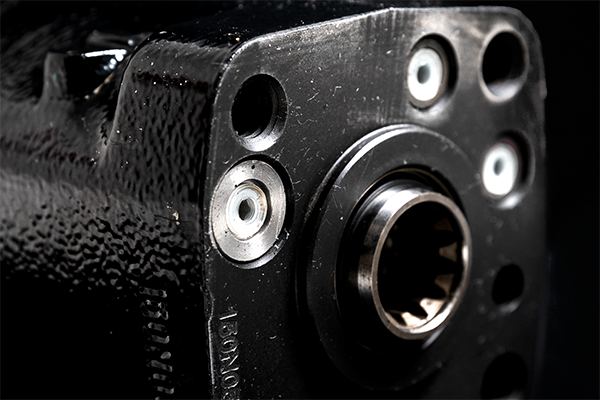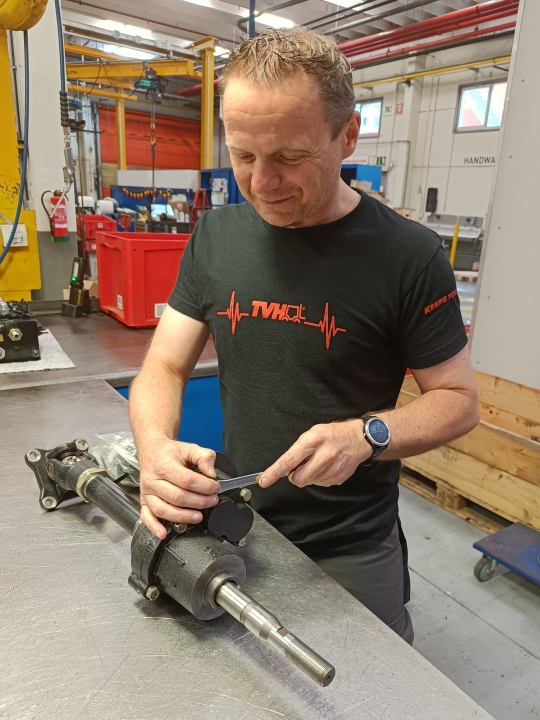HYDRAULIC VS ELECTRIC POWER STEERING SYSTEMS: A COMPARISON

Power steering has revolutionised the use of industrial vehicles. Gone were the days when steering required the strength of a weightlifter, and your only help was a steering knob or a slow, complex reduction system.
Fast forward a few decades and machines now have hydraulic or electric power steering. Both systems have their own merits and are applied in different situations.
Let's have a quick look at how they each operate.
HYDRAULIC POWER STEERING
Hydraulic steering systems are simple yet powerful. They're easy to maintain and operate via a hydraulic circuit, which includes a hydraulic pump and an oil tank.
The steering wheel controls the orbitrol, a rotary steering valve that allows oil to flow to the steering cylinder. This cylinder makes the steer axle move depending on the steering wheel's direction.
Among the various types of orbitrols, two are particularly common:
- Open Centre (OC) orbitrols require the hydraulic pump to supply flow at all times. They’re easy to install and don’t require an external controller.
- Closed Centre (CC) orbitrols engage the pump only when the steering wheel turns. This improves fuel efficiency and the longevity of the pump.
The only connection between the steering wheel and the steer axle is hydraulic fluid, with no mechanical backup. Therefore, for safety reasons, hydraulic power steering is only used for industrial machines operating at low speeds. If the pressure drops, an emergency steering valve inside the orbitrol provides a backup.

ELECTRIC POWER STEERING
Electric power steering (EPS) systems are compact, lightweight and budget-friendly. Compared to hydraulic systems, they're more fuel-efficient, maintenance-free and powered solely by the machine's battery.
The steering wheel operates the steering gear (or steering box), which converts the rotational motion into a lateral movement through the Pitman's arm. This arm connects directly to the steer axle via a drag link.
At the same time, a sensor within the steering gear detects the steering wheel movement and signals the electronic steering controller. This controller engages the EPS motor and actuator, allowing the electric power steering to take over from the initial mechanical movement.
All these actions must be perfectly synchronised to ensure safe and smooth steering. Therefore, only experienced technicians should install an EPS system.

STEER IN THE RIGHT DIRECTION WITH OUR EXPERT RANGE
Discover our extensive range of parts for both hydraulic and electric steering systems. Whether you're looking for steering gear, steer axles or any other steering part, we've got you covered.
Our range also includes:
- Rods
- Knuckles
- King pins
- Bell cranks
- And many other steering parts
But that's not all. Our remanufactured parts, expertly reconditioned by our skilled technicians, offer the benefits of "like-new" quality while saving you money. Plus, gain peace of mind with our full 1-year warranty on both new and remanufactured parts.
Request your customer account to shop parts online
Submit the application form to specify your business needs and request your customer account.
Our sales team will contact you within 3 business days to talk about your business needs and complete registration.
After your account is set up, you will receive a personal login to our online shop. We will guide you in finding parts and placing your first order.
Request your account
Over 75.000 customers trust TVH as their spare parts supplier to ensure their client’s equipment fleet is running smoothly and efficiently. It starts with a customer account.